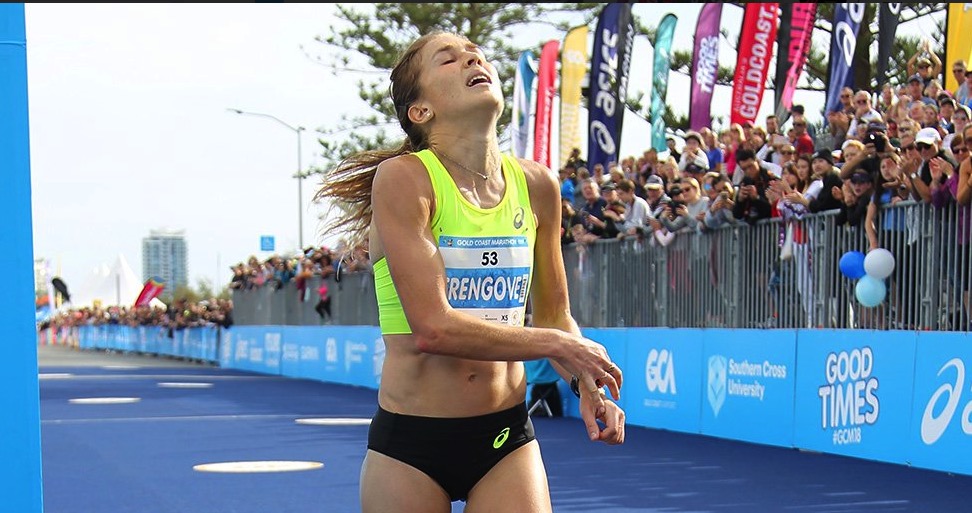By Alex Dreyer – Runner’s Tribe
Are you reaching your potential?
As a sports dietitian, I see all types of runners turning to nutrition and diet to go further or faster. I’ve been lucky enough to see different approaches to nutrition first-hand, from my time in the US collegiate system eating waffles after Saturday morning mile repeats, to staying with Jacob and Wesley Korir and having Ugali and Kenyan “tea” (about 5:1 ratio sugar to tea).
Now back in Perth, the most common thing I notice when seeing runners is that they almost always eat the same things each day. Just like the 67 year old masters runner who has been running in the Kayano from iteration 1 to 23, runners don’t like change.
Nutrition periodisation is the ultimate basic practice for runners to get the most out of their training, but it does require you to embrace change DAILY. Each different running intensity is tied to different fuel use in your body and to understand this article it is important to recognise one key fact; the faster your run, the more your body relies on carbohydrate for fuel.
I understand some runners have conflicting opinions on the role of carbohydrate, but if you utilise any hard session during your training week (think 200m sprints, 1km repeats, or a 20 minute tempo), you will perform these sessions better if you provide more carbohydrate as fuel for your body. Conversely, training periods that have high volumes of “easy” to “steady” running require less carbohydrate and a diet that complements these sessions can prioritise fat burning and improved body composition. Below is a description of the three major cycles of a good training program, and how your diet should change based on these cycles (sorry it’s a long one to start with).
Micro-cycle periodisation:
A micro-cycle is the smallest repeatable form a training program and diet plan can take. In general, this would be the changes in training and nutrition that occur in one week. For instance, runners generally have easy runs, long runs, and interval type sessions at tempo intensity or above. For each session, your body chooses a different fuel mix based on how hard or intense the exercise is.
When the session is easy, whether it be a swim, cycle, run, or circuit class, the preceding meals should be high in nutritious foods such as fruit and vegetables, moderate in protein and healthy fats, and relatively lower in carbohydrate which should come from high fibre sources such as wholegrains. Immediately before the easy session, the aim should be to eat as little as possible and to avoid carbohydrate so that the body can prioritise fat as a fuel source.
TOP TIP: Let’s assume you have an easy recovery run on Wednesday morning. Your body won’t require as much carbohydrate or total energy (kJ) therefore the lunch and dinner before should be very high in vegetables (a big salad) and have a moderate source of protein and fat such as a medium tin of tuna in olive oil, or half a chicken breast and an olive oil dressing. The morning of the session, the aim is to not have any carbohydrate so as to prioritise fat burning which is useful for both health related and performance related goals. Aim to have nothing other than a strong tea or black coffee as caffeine can improve fat burning and conserve carbohydrate for the hard sessions.
Meso-cycle periodisation:
A meso-cycle is a small collection of micro-cycles that represent similar training or nutritional goals. For example, during a “base-phase,” the majority of running undertaken is at easy or steady intensity and therefore the majority of the focus of nutrition in this meso-cycle would be to provide extra total energy and consume less overall carbohydrate because of low overall requirements for it as an energy source. In the meso-cycle prior to a race, say the month before a big event, there would be more training at a higher intensity and therefore less total energy required but more total carbohydrate intake to fuel high intensity exercise.
TOP TIP: Let’s say you are nearing the Gold Coast Marathon and you have 3 hard sessions per week; two threshold-type interval workouts and a Saturday morning hard tempo set. During this cycle, you would want to have plenty of carbohydrate “add-ons” in the pantry such as wholegrain bread or tortillas, microwave rice sachets, potatoes and sweet potatoes (8 minutes in the microwave and they are ready to eat!), or cut up fruit. Aim to add-on two or three of these options in the 2-3 meals prior to your hard sessions for extra quick-burning fuel and a better workout. If your workout is in the morning, have a slice of toast with honey, a banana, or one sachet of instant oats for a top up of your quick burning energy stores.
Macro-cycle periodisation:
A macro-cycle is the larger training block which could encompass anything from 3 to 6 months depending on the type of event you are training for. Changing goals for a macro-cycle is tough because these are such broad types of changes. For instance, you may try using caffeine, a carbohydrate mouth rinse, or nitrates around key sessions for improvements during track season. Likewise, you may also try to include more bulky vegetables and good fats to reduce how much energy (kilojoules) you eat to safely lose a couple of kilos before your next big half-marathon.
TOP TIP: Immediately after a major race talk to a sports dietitian or a coach about what to change for the next race (macro-cycle). There are always strategies to improve performance however make sure you have the basics of a good training diet right first before you aim for the 1%ers.
Alex Dreyer
Accredited Practising Dietitian
Provisional Accredited Sports Dietitian
Level 1 Athletics Australia Coach































Comments are closed.